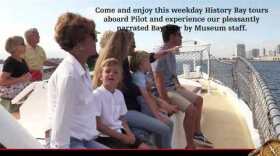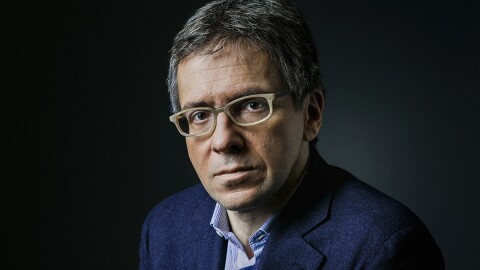
Jantzen Zink
On-Air Fundraising Associate Producer/EditorJantzen Zink produces television and radio pledge drives for the on-air fundraising department at KPBS. Before joining KPBS in 2011, Jantzen was the promotions assistant at KUSI in San Diego. She started her career in broadcasting in 2008 as a weather forecaster and reporter at WSIL and WSIU in Illinois. Jantzen graduated with a degree in radio and television from Southern Illinois University Carbondale.
RECENT STORIES ON KPBS
-
Launched in 1914 to her removal from regular service in 1996, Pilot enjoyed an active career as San Diego’s chief pilot craft – assisting almost every one of the thousands of major commercial ships to enter or leave the bay during that time.
-
E-bikes are growing in popularity as people look for alternative ways to get around. Kids especially are starting to ride them. But are they safe? KPBS wants to know if you, or your kids, have been involved in an e-bike accident.
-
Life in the idyllic town of Marlow has just about returned to normal, but it’s not long before Judith, Suzie, and Becks are called back into action to solve a series of new crimes. Can they crack the case again? Season 2 of THE MARLOW MURDER CLUB premieres on Sunday, August 24 at 9/8c.
-
Stream now with KPBS Passport / Watch Tuesday, Aug.12, 2025 at 8 p.m. on KPBS TV. A powerful story of the most destructive invention in human history, outlining how America developed the nuclear bomb, how it changed the world and how it continues to loom large in our lives. Witness the raw power and strangely compelling beauty of rare views of above-ground nuclear tests.
-
See how a power play by Soviet leader Nikita Khrushchev backfired, sparking a dangerous confrontation with the U.S. — the Cuban Missile Crisis. Over fifty years later, we still don’t know everything about what happened; many Soviet records are still secret. But this much is clear: October 1962 was the closest the world has ever come to thermonuclear war.
-
In 1946, fear and faith in science collide. For the first time, Americans begin to learn more about the bomb. One in-depth essay about the experiences of the people in Hiroshima creates a sensation and has enormous impact, causing many to rethink nuclear weapons. At the same time, the new Atomic Age is promising miraculous progress in all areas of life, thanks to the wonders of the atom.
- Immigration agents arrest parent outside Chula Vista elementary school
- Poway is a paradise of single-family zoning and protected open space
- Students who blew whistle on Canyon Crest Academy Foundation feel vindicated by audit report
- San Diego veterans volunteer to stand with Afghan at immigration court
- Immigration agents arrest parent near Chula Vista school







